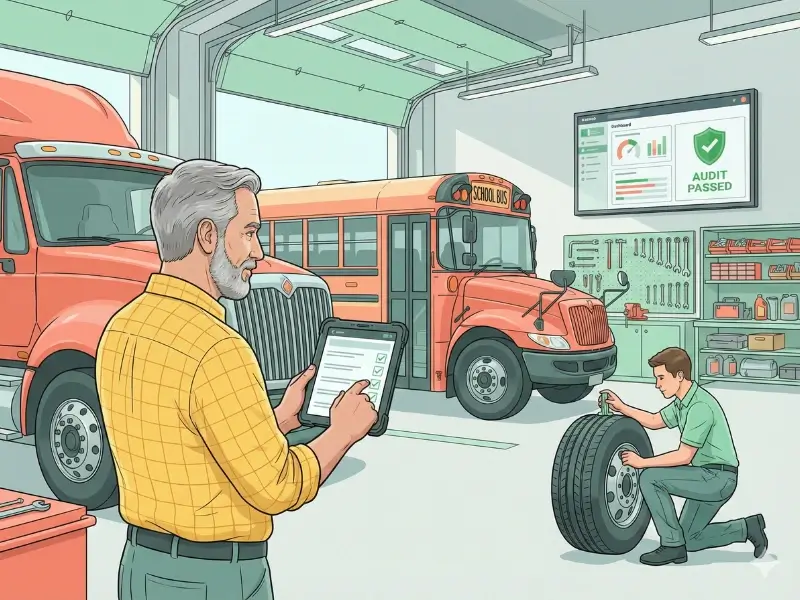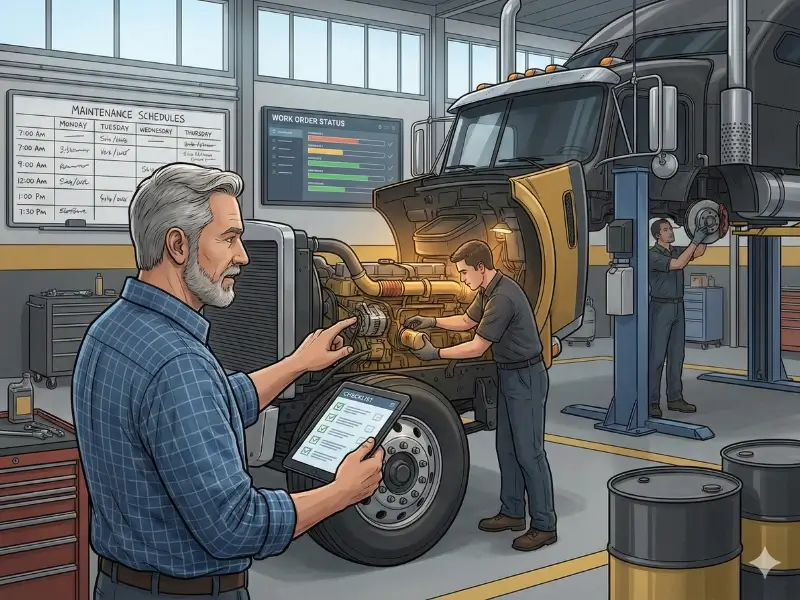Key Takeaways
Digital transformation is changing the transportation and logistics industry. According to a 2023 MHI Annual Industry Report, 74% of supply chain leaders are increasing their investments in supply chain technology and innovation. This shift is driven by the need to improve efficiency, reduce costs, and improve customer experiences.
Companies are simplifying operations and gaining a competitive edge by integrating advanced technologies. In this article, we will explore five key ways digital transformation is improving transportation and logistics, highlighting its profound impact on the industry.
Challenges That a Digital Solution Could Solve
Digital solutions address numerous challenges in the transportation and logistics industry. One major issue is inefficiency due to manual processes, which digital automation can simplify, reducing errors and speeding up operations. Visibility across the supply chain is often limited, but digital tools provide real-time tracking and comprehensive data integration, enhancing transparency.
Managing disruptions is another challenge; predictive analytics and real-time data enable proactive responses to potential issues. Additionally, optimizing routes and inventory levels can be complex; advanced algorithms and data analytics ensure more efficient operations.
Lastly, customer service can suffer from slow response times, but AI-driven platforms offer instant support, improving customer satisfaction. Digital transformation effectively tackles these challenges, driving growth and efficiency.
How Digital Transformation is Improving Logistics
1. Better Supply Chain Visibility
Digital transformation enables real-time tracking of shipments. With GPS and RFID technologies, companies can monitor the exact location of goods at any given time. This transparency allows for better coordination and timely interventions in case of delays or disruptions.
Advanced software solutions integrate data from various sources, providing a comprehensive view of the supply chain. This integration helps in identifying bottlenecks, optimizing routes, and improving overall efficiency.
Predictive analytics tools forecast potential issues before they arise. By analyzing historical data, companies can predict delays, demand fluctuations, and other supply chain challenges. This foresight allows for proactive measures, reducing the impact of unforeseen events.
2. Optimization Through Data Analytics
Data analytics plays an essential role in demand forecasting. By analyzing sales data, market trends, and other factors, companies can accurately predict future demand. This ensures that inventory levels are optimized, reducing both stockouts and overstock situations.
Advanced algorithms analyze traffic patterns, weather conditions, and other variables to determine the most efficient routes. This optimization reduces fuel consumption, delivery times, and operational costs.
Data-driven insights help in identifying cost-saving opportunities. Whether it's optimizing fuel usage, reducing idle times, or improving warehouse management, data analytics provides actionable insights that lead to significant cost reductions.
3. Automation of Processes
Automation simplifies order processing, reducing the need for manual intervention. Automated systems handle order entry, invoicing, and shipment scheduling, leading to faster and more accurate processing.
Automated warehouse management systems (WMS) improve inventory accuracy and efficiency. Technologies like robotic process automation (RPA) and automated guided vehicles (AGVs) improve picking, packing, and sorting operations.
Chatbots and AI-driven customer service platforms provide instant support to customers. These tools handle routine inquiries, track shipments, and resolve issues quickly, improving customer satisfaction.
4. Improved Customer Experience
Digital tools enable personalized communication with customers. Companies can send tailored updates, promotional offers, and service notifications based on customer preferences and behavior.
Transparency is a key aspect of digital transformation. Customers can track their orders in real time, receive timely updates, and access detailed information about their shipments. This transparency builds trust and enhances customer loyalty.
Automated systems and real-time data access enable faster response times to customer inquiries and issues. This quick resolution improves the overall customer experience and strengthens the customer-company relationship.
5. Agile and Responsive Operations
Digital transformation makes supply chains more flexible and responsive. Companies can quickly adapt to changes in demand, market conditions, and other variables. This agility ensures that they can meet customer expectations even in dynamic environments.
Advanced technologies help in managing disruptions effectively. Real-time data and predictive analytics enable companies to respond swiftly to unexpected events, minimizing their impact on operations.
Digital solutions are scalable, allowing companies to expand their operations without significant investments in infrastructure. This scalability supports growth and ensures that companies can meet increasing demand efficiently.
The Bottom Line
Improved supply chain visibility, optimization through data analytics, automation of processes, improved customer experience, and agile operations are just a few ways digital technologies are driving improvements. By adopting these technologies, companies can achieve greater efficiency, reduce costs, and deliver superior service to their customers. The future of transportation and logistics is undoubtedly digital, and those who adopt these innovations will be well-positioned for success.



.png)








.png)


.png)






.webp)


